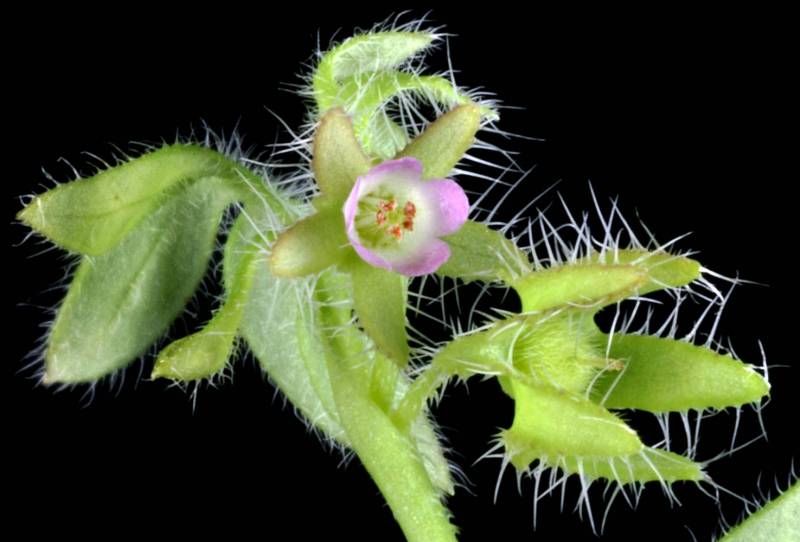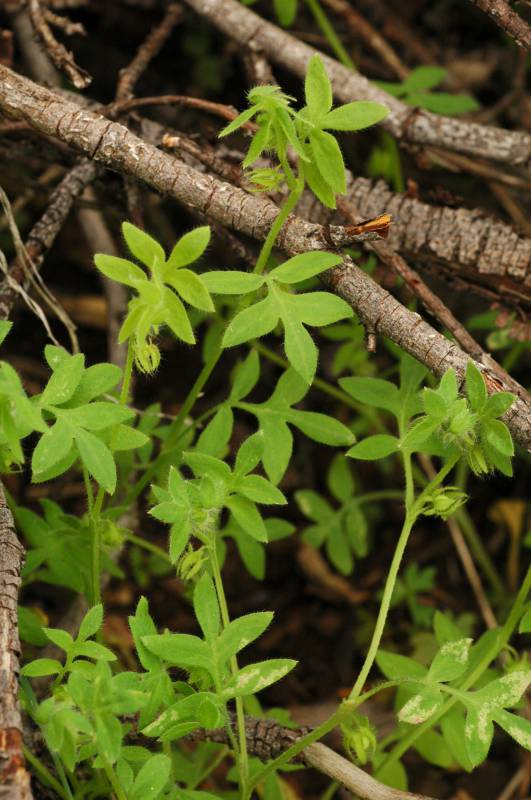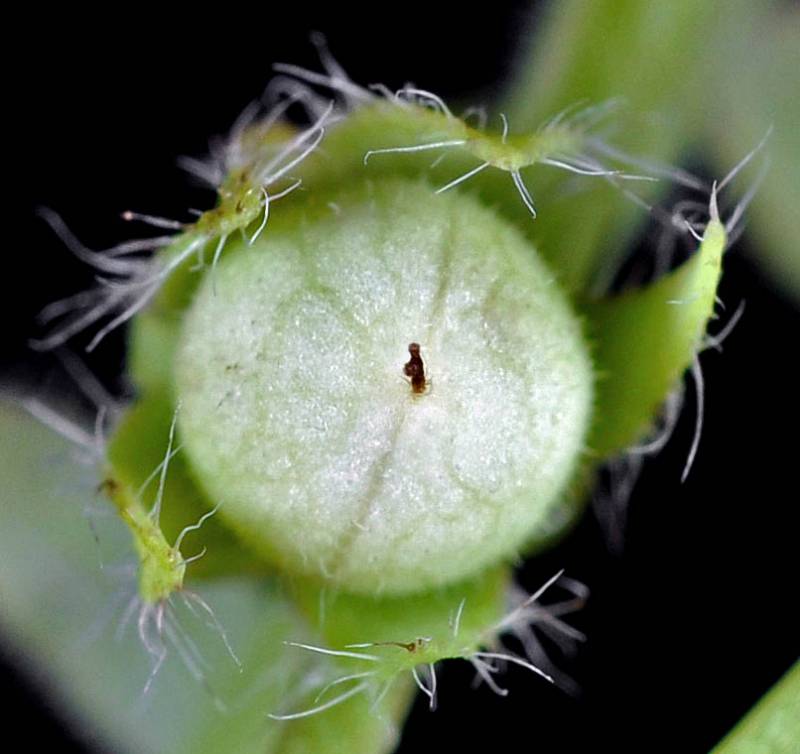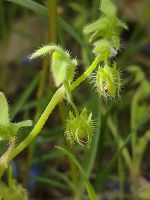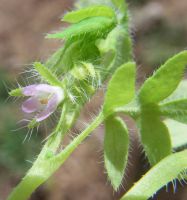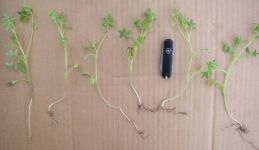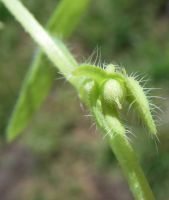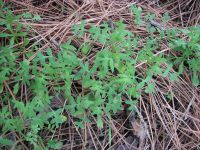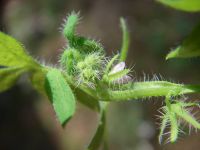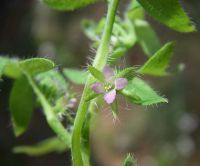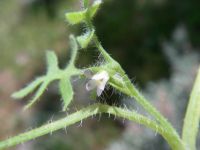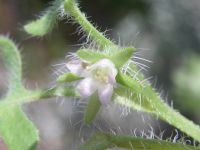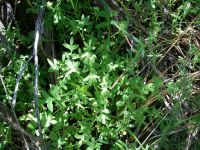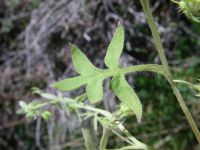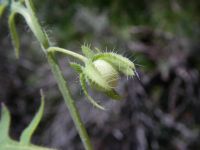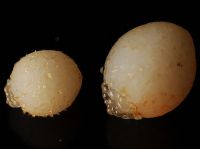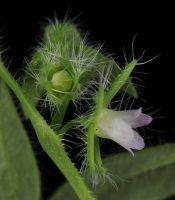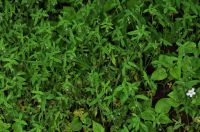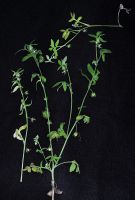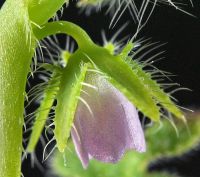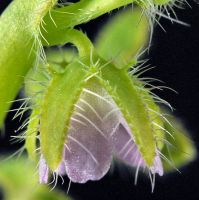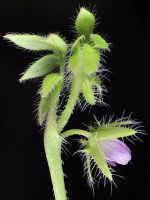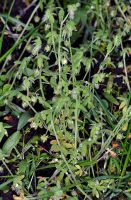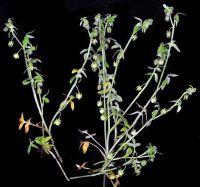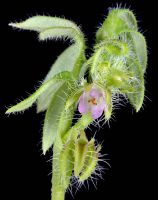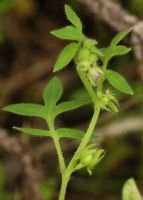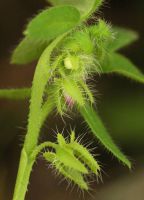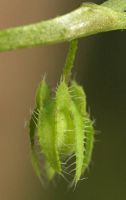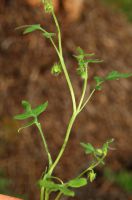Distribution: Occurring chiefly east of the Cascades crest in Washington; southern British Columbia to California, east to Montana and Colorado.
Habitat: Wooded slopes, thickets, and less often in open places, from the foothills to moderate elevations in the mountains.
Flowers: April-July
Origin: Native
Growth Duration: Annual
Conservation Status: Not of concern
Pollination: Bees, flies, sawflies
Delicate annual from a taproot, the stem usually branched, weak, angled, 1-3 dm. tall.
Leaves alternate, thin, stiff-hairy, especially on the margins and on the petiole; leaf blades with a narrow rachis and 2 pairs of spreading, lateral lobes, these up to 2 cm. long and 7 mm. wide.
Flowers solitary in the leaf axils, the pedicels opposite the leaves, elongating to 5-15 mm. in fruit; flowers tiny, the lavender, cup-shaped corolla 2 mm. long, surpassed by the 5 bristly calyx lobes; appendages between the calyx lobes 1-2 mm. long; stamens 5, the filaments short; style short, shallowly 2-cleft.
Capsule 1-seeded.
Publication: Proceedings of the American Academy of Arts and Sciences 10: 315. 1875.
PNW Herbaria: Specimen records of Nemophila breviflora in the Consortium of Pacific Northwest Herbaria database
WA Flora Checklist: Nemophila breviflora checklist entry
OregonFlora: Nemophila breviflora information
E-Flora BC: Nemophila breviflora atlas page
CalPhotos: Nemophila breviflora photos

